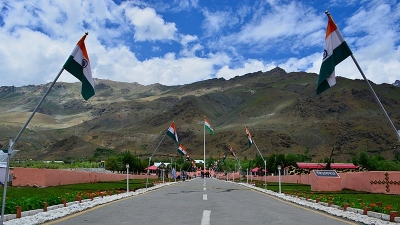Alchi Attractions - Tourist Places To Visit In Alchi
-
01Alchi Monastery
+ Read MoreAlchi Monastery, situated in the village of Alchi, is one of the oldest monasteries in Ladakh. Also, known as Alchi Choskhor and Alchi Gompa, it is situated on the banks of the river Indus. It is believed that Rinchen Zangpo, the translator of Sanskrit Buddhist texts into Tibetan, constructed the monastery in the 10th century.
One of the most significant features of this monastery is that it is built on flat ground. The monastery complex comprises of three major temples namely, Du-khang, Sum-tsek and the Temple of Manjushri. Their history dates back to the early 12th and 13th century.
Lotsabha La-khang or the Translator's Temple and La-khang Soma are the two other important temples in the complex of the monastery. Chortens or stupas at the entrance of the monastery is also an important structure there.
Presently, the monks of the Likir Monastery look after this gompa. Photography is prohibited here and, visitors are required to carry flash-lights or torches as the monastery has not yet been electrified.
-
02Sum-Tsek
 + Read More
+ Read MoreSum-tsek Temple is a part of the Alchi Monastery and is quite famous for its architecture. The term Sum-tsek literally means 'three-storied building'. The building is constructed in the Tibetan style of architecture with natural stone and loam as building material.
This small structure enshrines three huge idols of four-armed 'bodhisattvas' or enlightened-beings, standing at a height of 4 m each. The idol of Maitreya, the Buddha of the future also known as the Laughing Buddha, 4.63 m in height, is positioned at the centre of the floor.
On the left and right side of the idol, are positioned a white Avalokiteshvara, a 'bodhisattva who embodies the compassion of all the Buddhas, and an idol of Manjushri, a 'bodhisattva' associated with transcendent wisdom, respectively.
-
03Du-khang
 + Read More
+ Read MoreDu-khang or the Assembly Hall is situated in the middle of the complex of the Alchi monastery. It is the most ancient and largest structure within the monastery where several ceremonies are organised by the monks.
A number of additions were made to it in the 12th and 13th century. About 1,000 frescoes of Buddha are painted in the corridors of the temple. The outer gate of the temple holds a Mahakal, a stone representation of the Hindu god of destruction, Shiva, and the 'bhavacakra' or 'Wheel of Life' which is the symbolic representation of the samsara or cyclic existence.
The temple walls showcase the Panch Tathgats. Vairochana, the celestial Buddha, is the prime deity of this temple. The Panch Tathgats, painted with six types of 'mandalas' or Buddhist sacred art, surround this deity. These 'mandals' are positioned around many paintings of Buddha, the guardian of dharmas, 'bodhisattvas', and other divinities.
-
04Temple Of Manjushri
+ Read MoreTemple of Manjushri, popularly known as the Jampe La-khang, is situated close to Lotsawa La-khang in Alchi. The history of this temple dates back to the 12th century. The temple is square in shape and enshrines four idols of Manjushri, a 'bodhisattava' or 'enlightenment-being' associated with transcendent wisdom.
All the four idols of Manjushri have one head and four arms each. Each of the idols is decorated with a bow, an arrow, a book and a sword and is seated on a lion throne. 'Seven Jewels' as well as 'Eight Suspicious Symbols' are represented at the base of the throne.
The idol is adorned with jewellery and a crown. The walls of the temple all have images of Buddha while the image of the main deity, Manjushri, is shown on the central wall. The figures of Amitabha, or the Buddha of infinite light, can be seen on the right side of the side walls while the images of Akshobhya, the immovable one, can be seen on the left side.
-
05Lotsawa La-khang
 + Read More
+ Read MoreLotsawa La-khang, dedicated to Rinchen Zangpo, the translator of Sanskrit Buddhist texts into Tibetan, is a Buddhist temple in the village of Alchi. The idol of Shakyamuni, the Sakya clan sage, is placed in this temple. The idol of the droopy-eared Rinchen Zangpo is clearly visible on its right side. The walls of the temple are embellished with beautiful and old paintings of Shakyamuni.



 Click it and Unblock the Notifications
Click it and Unblock the Notifications







